To Untangle America’s Complex Border Challenges, We Must First Tame Climate Change and Hunger
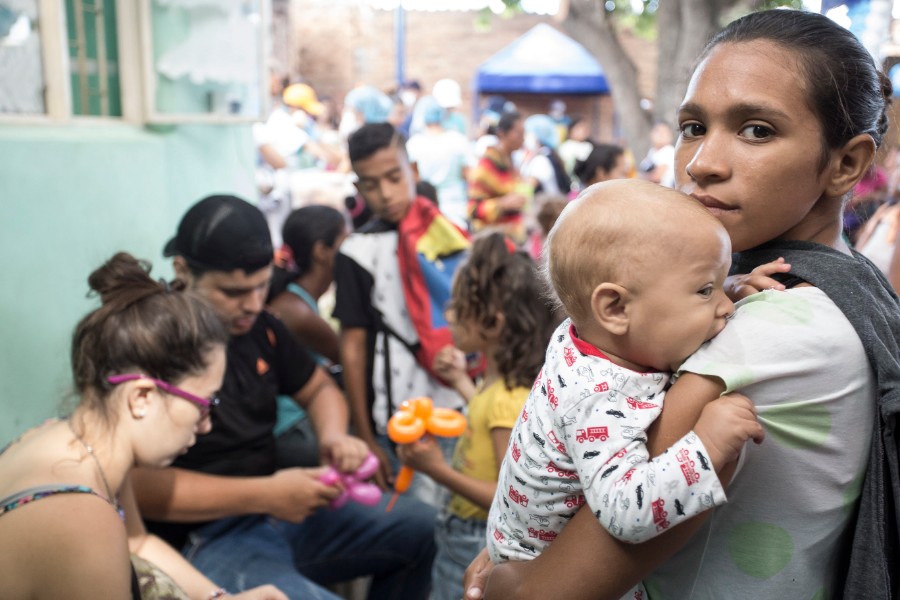
By Barron Segar
A few years ago, Jose Cirilo’s small farm in San Gerardo, El Salvador, was failing, the result of a years-long drought that had ravaged Central America. Newlywed at the time, he made a difficult decision that so many like him in the region have been forced to make.
“Because of the situation, we couldn’t grow enough,” Cirilo recalled later. “The land didn’t yield as much as before, so that forced me to migrate to the United States.”
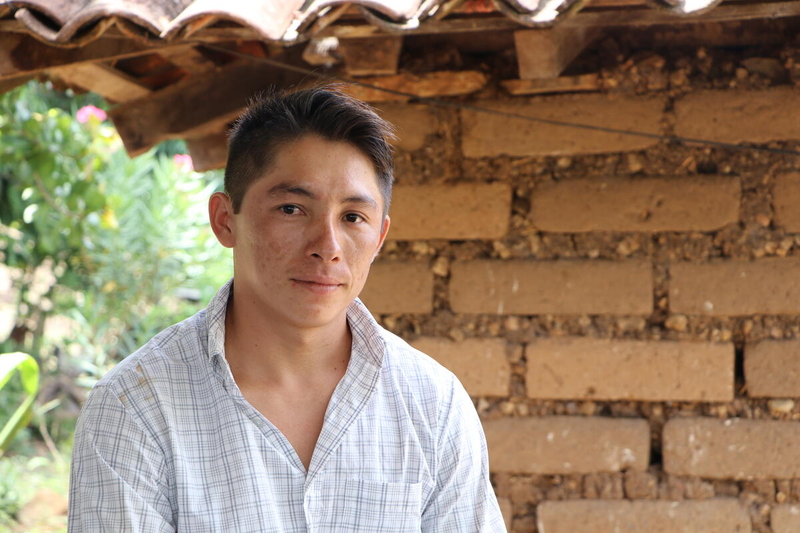
“I migrated because I wanted to support and provide for my family,” said Cirilo.
Cirilo never made it to the U.S. because authorities stopped him as he tried to cross the Rio Bravo – the river we in the U.S. call the Rio Grande. He ended up back in San Gerardo to fight an increasingly futile battle with a stubborn drought and to find a way to feed his growing family.
Cirilo’s impulse to leave home is emblematic of a burgeoning number of Central Americans who make their way to the U.S. because they are facing chronic hunger. The United Nations World Food Programme (WFP) recently reported that the economic crisis caused by COVID-19 and years of extreme climate events has resulted in a 400% increase in the number of people in El Salvador, Guatemala, Honduras and Nicaragua who are food insecure. Not unrelated, it also showed that the number of Central Americans who say they are willing to migrate grew from eight percent in 2018 to 15 percent this year.
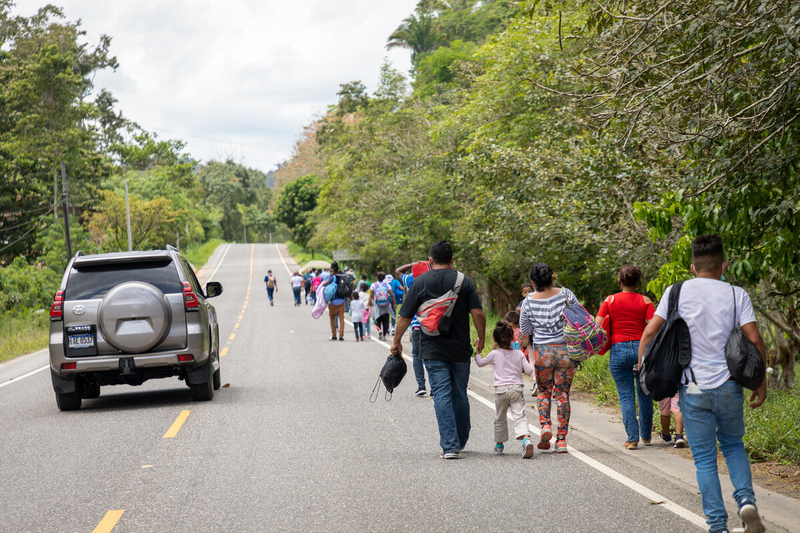
Families prepare to begin the month long journey on foot through Guatemala and Mexico to the United States. Some have made the journey 4 or 5 times, only to be turned back.
This helps explain why unprecedented numbers of Central American migrants – many of them unaccompanied minors – have come to the southern U.S. border to try and gain entry over the last few weeks. Figuring out how to address these migrants’ needs once they arrive at our border is vexing the current U.S. administration, as it has every previous administration.
There are no easy solutions to untangle America’s complex border challenges, but there are remedies that can alleviate vulnerable people’s need to migrate. They begin with understanding what truly drives the hunger that prompts so many people from Central America’s Northern Triangle countries of El Salvador, Guatemala and Honduras to leave their homes.
The short answer: climate shocks.
Central America is part of what’s known as the “Dry Corridor,” a mostly tropical dry forest spanning from southern Mexico to Panama that has faced prolonged drought followed by excessive rainfall. The result has been the decimation of fields upon fields of crops like corn, beans and coffee that many families rely on for their existence.
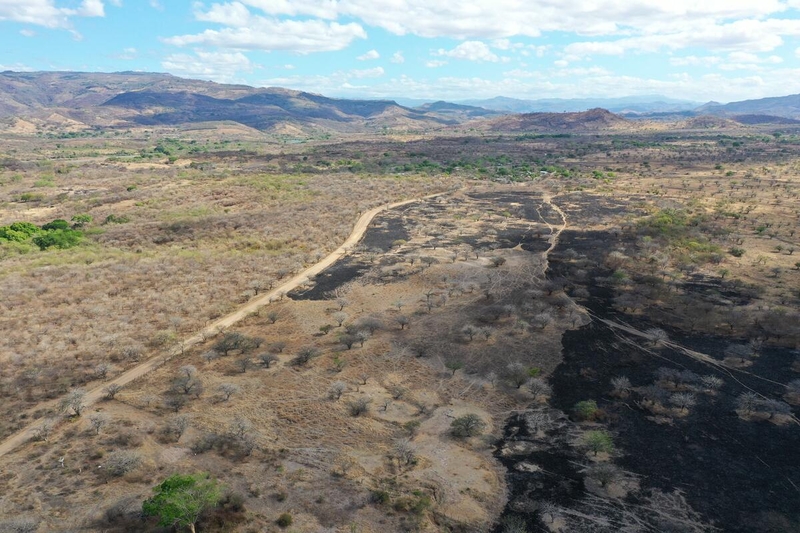
Five years of consecutive drought in Honduras have left farmlands barren and vulnerable to fires.
This devastating cycle of drought and flood is almost identical in other parts of the world – such as in Africa’s Sahel region, where climate heating has caused the Sahara Desert to incrementally overtake previously fertile ground. The same is true in southern Africa, where increasingly frequent and intense droughts and cyclones have depleted crop production.
In addition to conflict and economic instability, the rising prevalence of hunger is partly responsible for the global growth in displaced people to record levels in the last few years. The U.N. World Food Programme has estimated that, across the globe, every 1 percent rise in food insecurity is associated with a 2 percent increase in migration.
Solutions and Safety Nets for the Most Vulnerable
The essential question is: What can be done by the most acutely affected countries, with the support of others around the world?
Among the many solutions showing promise today are efforts by humanitarian organizations, countries and communities to restore degraded landscapes with natural buffers that protect against excessive rainfall or extreme storms, as well as the building of reservoirs and wells to prepare for drought.
Risk information and early warning systems (EWS) are increasingly seen as key for reducing the impacts of climate change on hunger. An example of this in action is the U.N. World Food Programme’s Hunger Monitoring Unit, which collects and uses data to observe the effects of extreme weather and make critical decisions. When Hurricanes Iota and Eta tore through parts of Central and Latin America in late 2020, we were able to immediately see the impact on the food security situation and deploy emergency assistance to those hit the hardest by the storms.
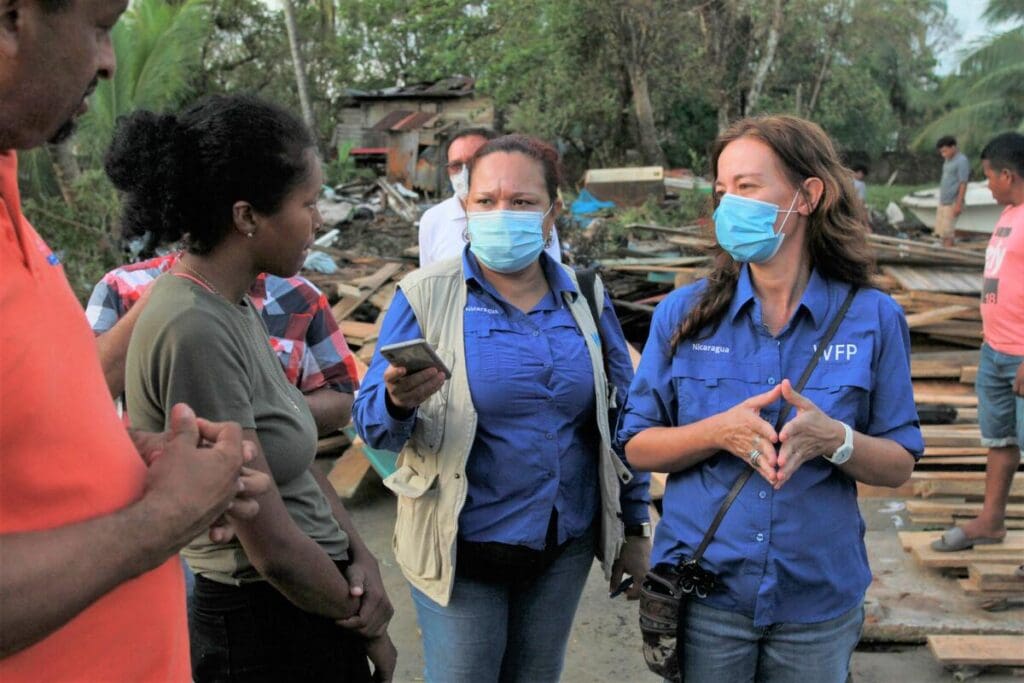
WFP Representative, Giorgia Testolin (right), meets local community leaders at one of Bilwi’s neighbours devastated by Hurricane Eta in Nicaragua.
Social and financial safety nets that allow people pounded by the climate crisis to get back on their feet must be put in place and actively supported. This includes feeding and nutrition programs and cash payment initiatives for those facing hunger, as well as micro-insurance programs that allow small-scale farmers to receive payouts as compensation for lost crops due to drought and flooding. Right now, about 100,000 households across Africa are benefiting from such microinsurance arrangements through the U.N. World Food Programme, and in Guatemala a similar program is in a pilot phase.
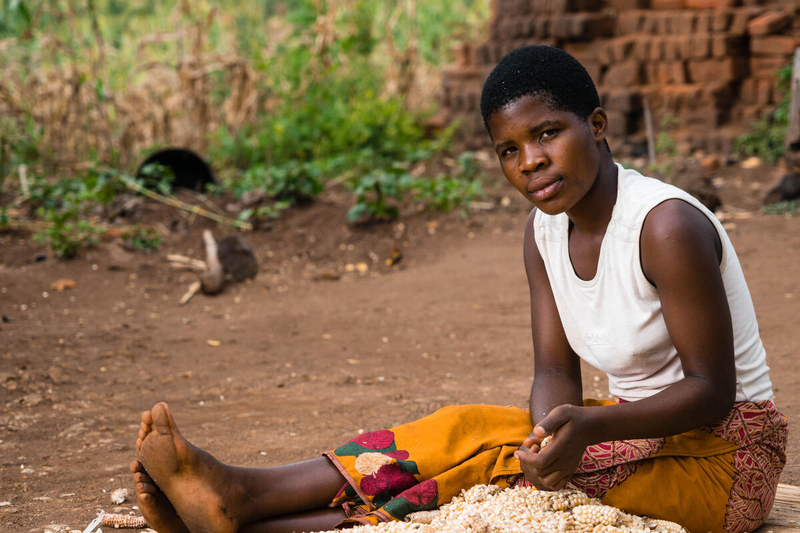
Petros Malunga was one of the first small-scale farmers join WFP’s climate risk insurance program in Malawi. “With my payout, I’m going to buy seeds and work on my garden which will bring me some benefits and help me get through the year” he said.
Too often our national dialogue about how we should respond to the growing presence of migrants at our borders misses the forest for the trees. There’s a reason Central Americans like Jose Cirilo end up at the Rio Bravo in the first place. Until we understand and address what’s pushing them, migrants will continue to seek the life-saving sustenance they and their families are so tragically missing at home.
Barron Segar is President and CEO of World Food Program USA, an organization based in Washington, D.C., that supports the mission of the United Nations World Food Programme by mobilizing American policymakers, businesses and individuals to advance the global movement to end hunger.




